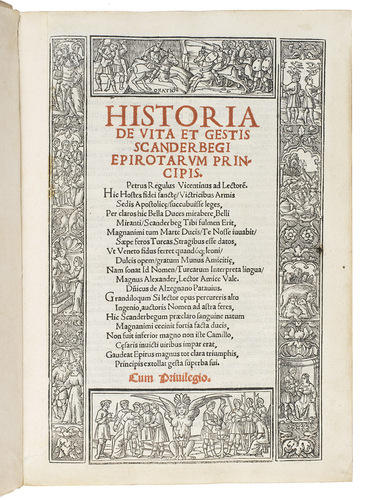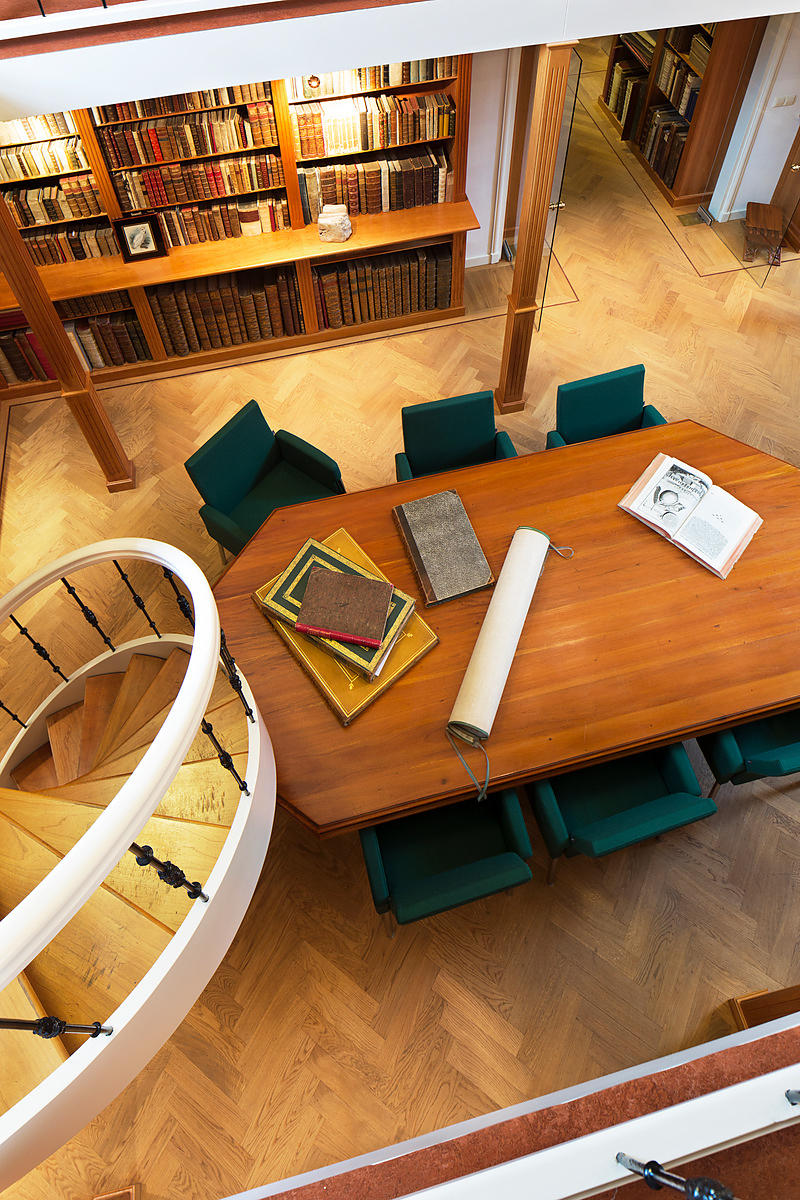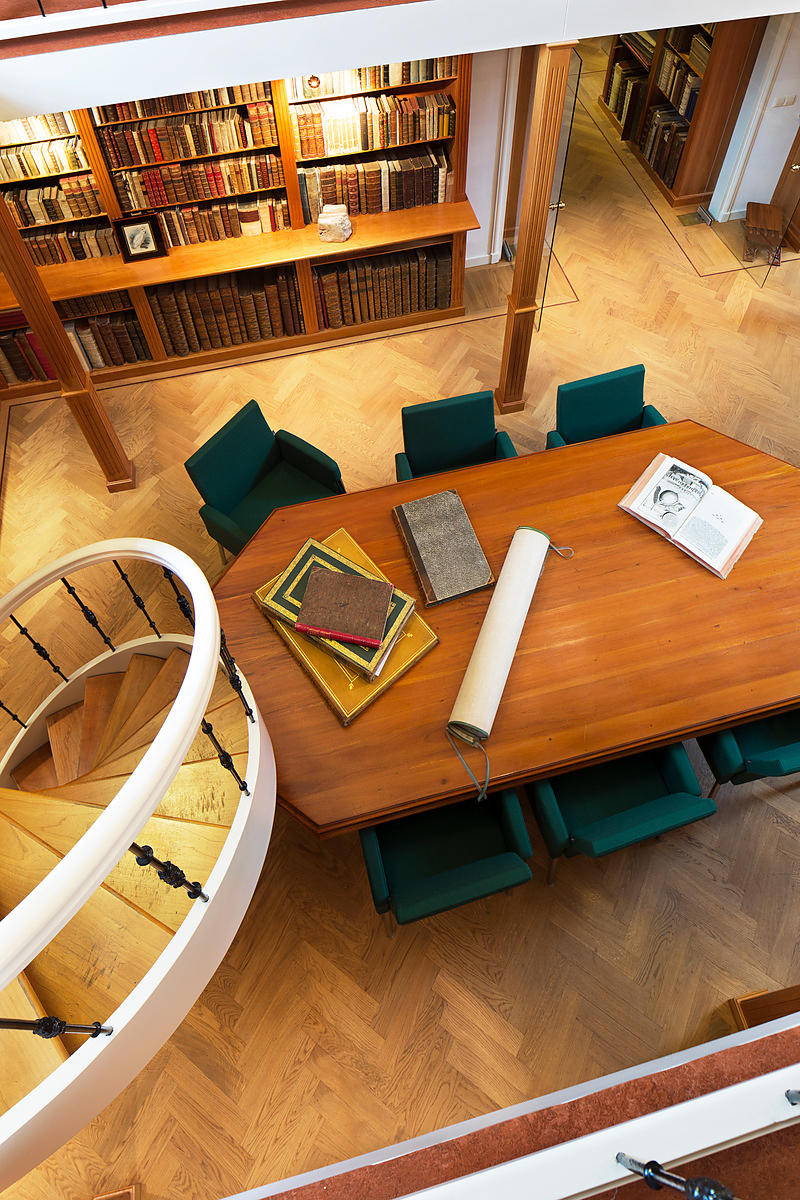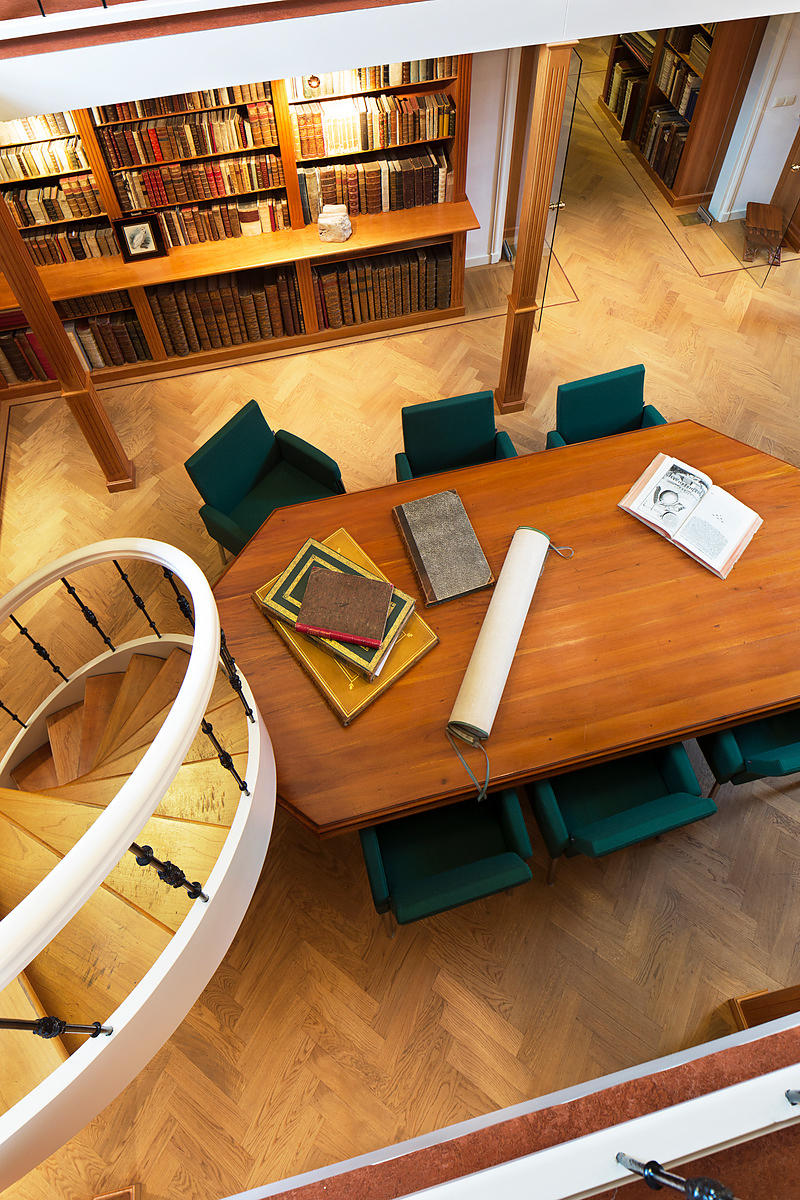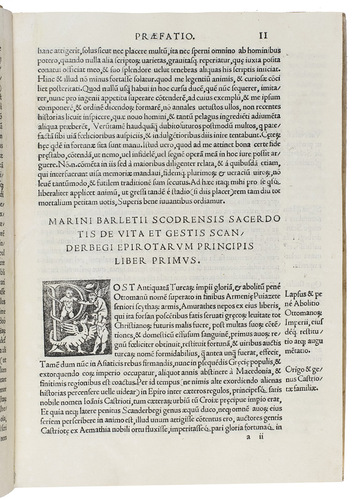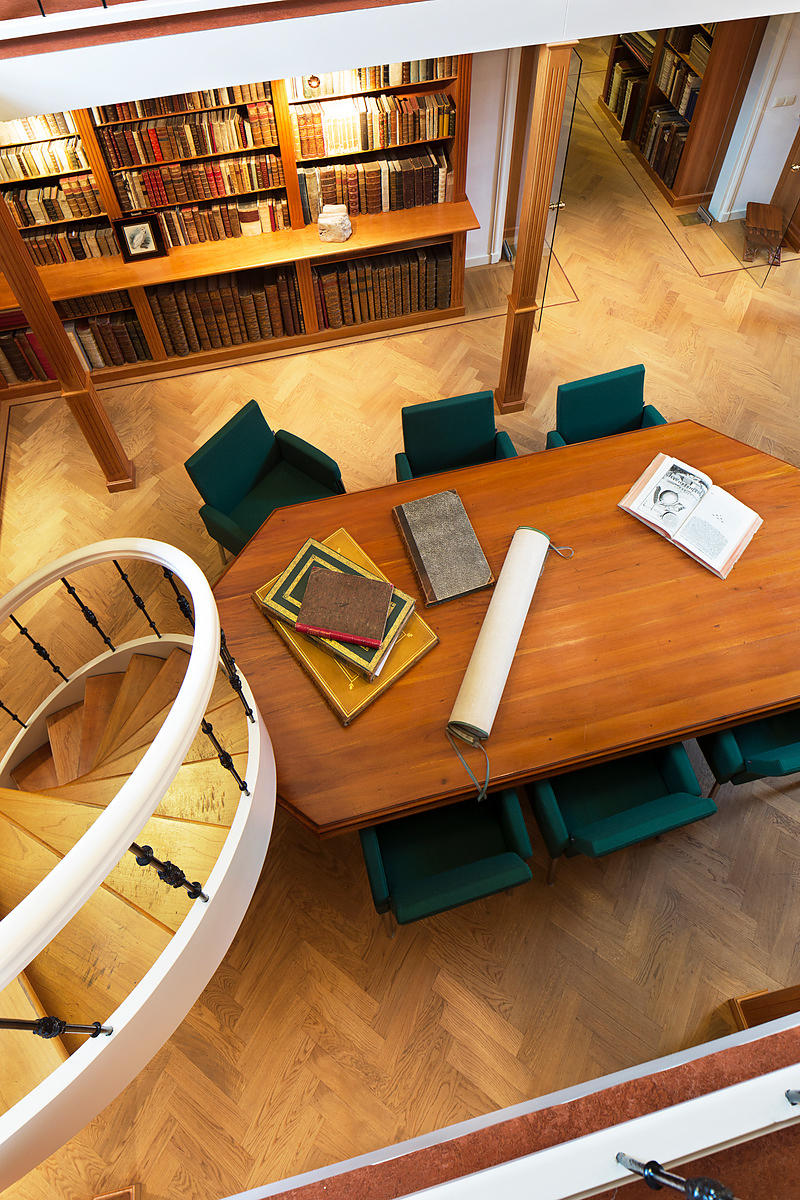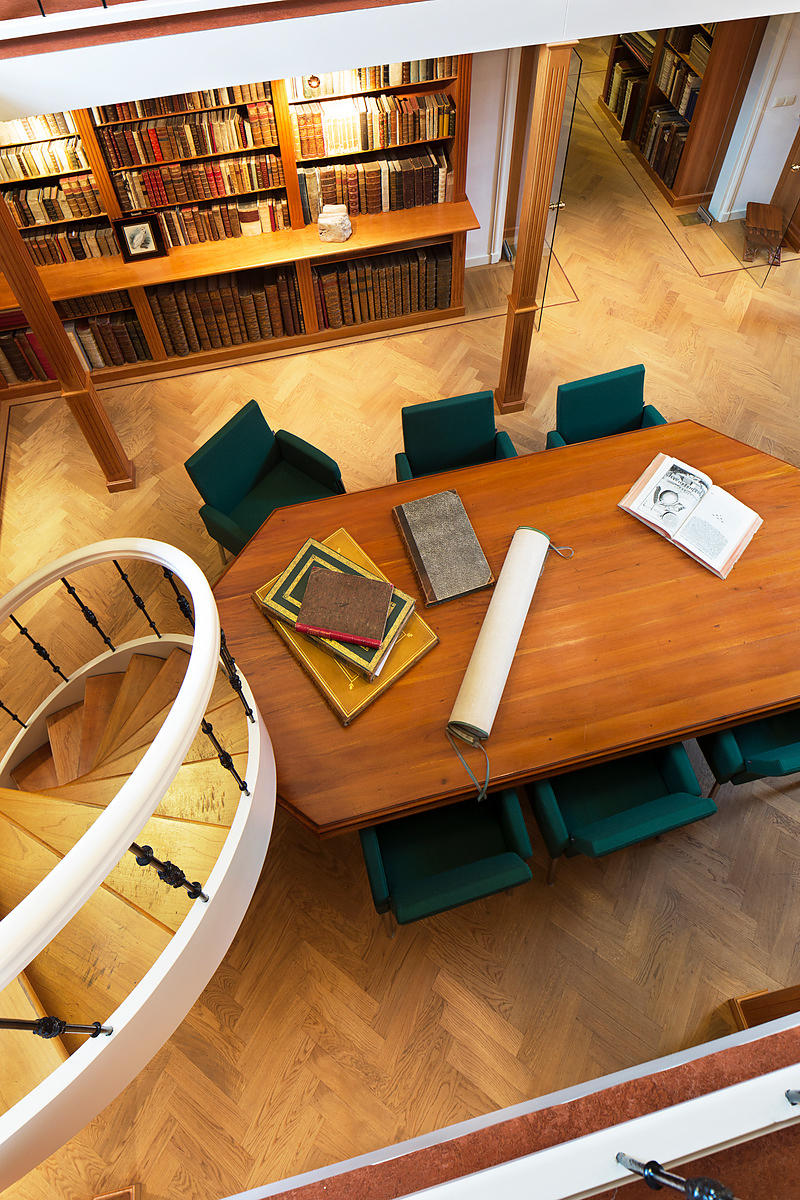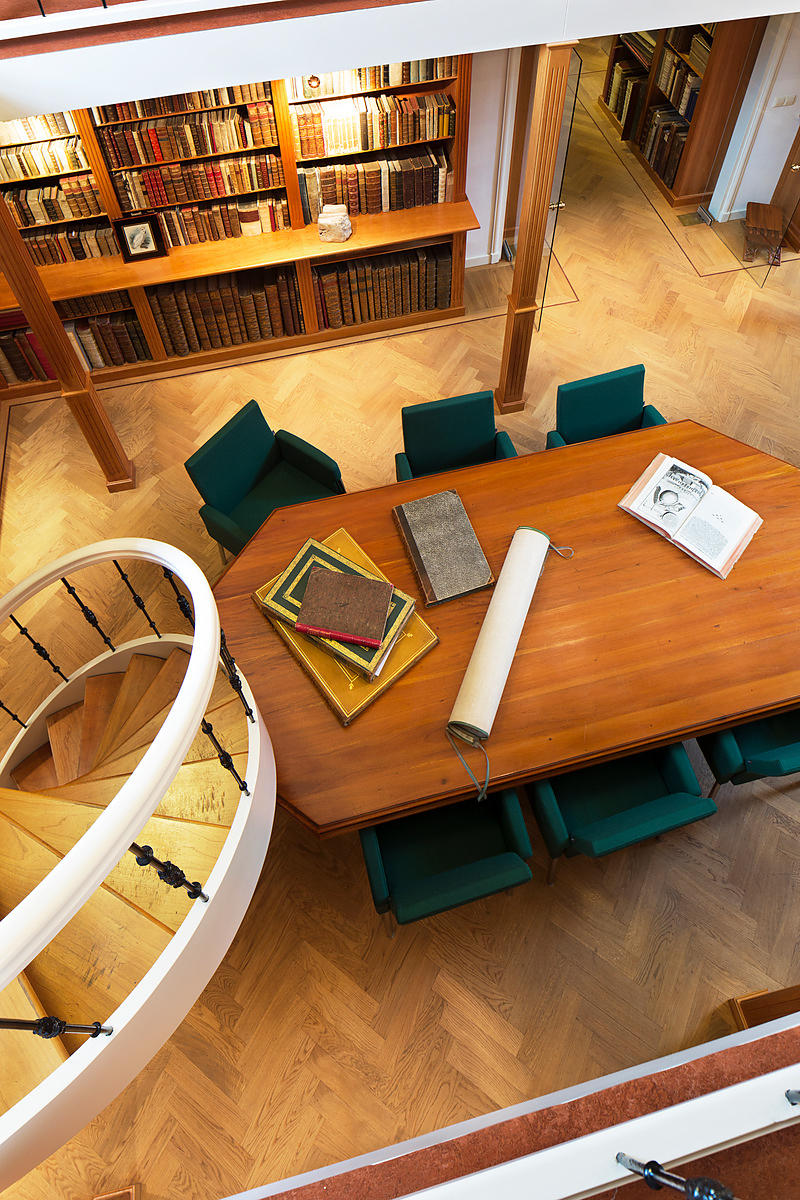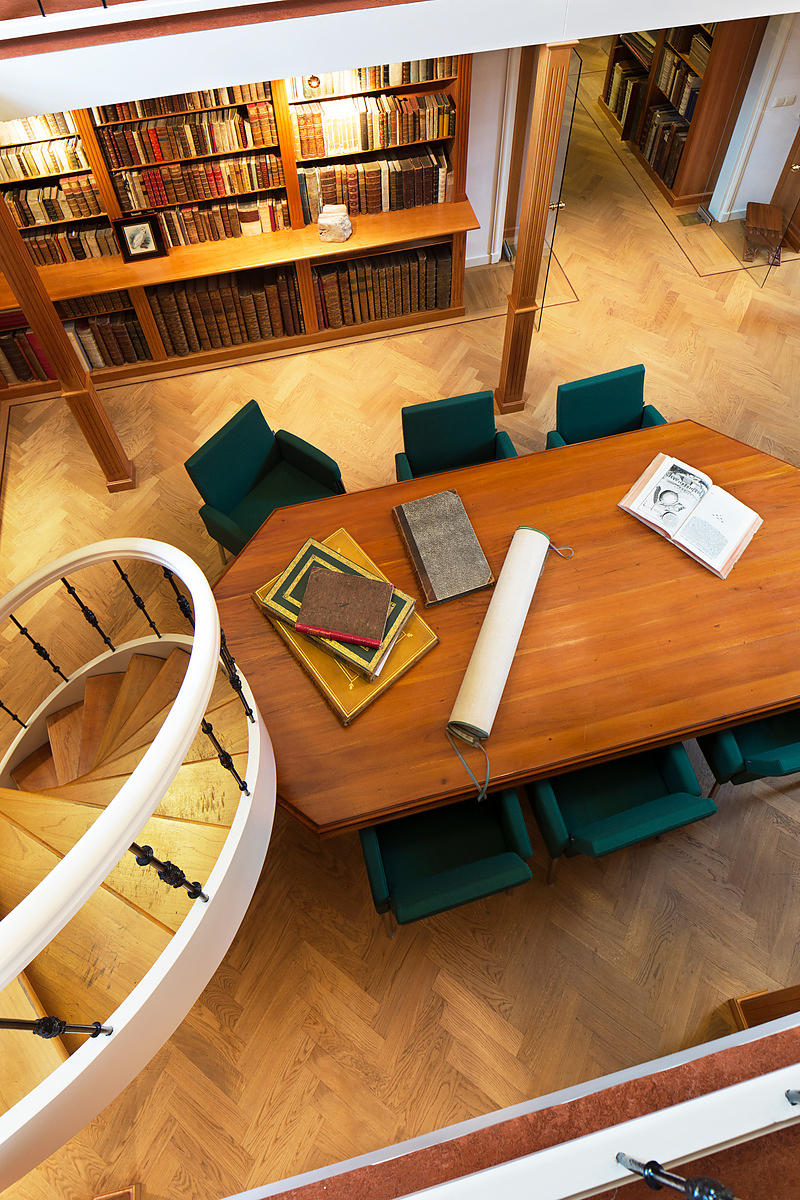BARLETI, Marin.
Historia de vita et gestis Scanderbegi Epirotarum principis.
[Colophon:] Rome, B[ernardino] V[eneta de' Vitali], [ca. 1520/22?]. Folio. With a full-page woodcut portrait of Skanderbeg (25.5 x 16.5 cm), a 4-piece woodcut frame on the title-page and 11 woodcut decorated initials from 5 series, many pictorial and the largest with a portrait. 17th-century Italian? sheepskin parchment. [4], CLIX, [1] ll.
€ 25,000
First edition of a famous biography of the national hero of Albania, Georg Kastriota or Castriota, known as Skanderbeg (1405-1468), by the only Albanian historian before the nineteenth century, Marin Barleti or Marinus Barletius (Shkodra ca. 1450 - Rome 1512), an historian, author and priest from Skhodra. Skanderbeg became a national hero in Albania as the national leader in the struggle with and wars against the Ottoman Empire, fighting for Albanian independence. The books Latin title refers to the region using the name of the ancient kingdom Epirus in what is now south Albania.
Skanderbeg was born into an Albanian noble family, but as a young boy in 1415 and again as a young man in 1423 he was sent as a hostage to the Ottoman Sultans, Murad I and II respectively, in Constantinople, where he converted to Islam and took the name Iskender (Skanderbeg is derived from that name). In the 1440's Murad II sent Skanderbeg with the Ottoman army to his native Albania. Once there, he left the Turkish army in November 1443 and abandoned the Sultan to become the leader - and hero - of the struggle for Albanian independence, rebelling against the Ottomans and leading a successful military campaign that expelled them from Albania. He managed to maintain Albania's independence for 25 years, but after his death the country fell back under Ottoman control. Barleti's work highlights Skanderbeg's influence on the political landscape of Albania, the Balkan peninsula and Europe. The double-headed eagle in the left woodcut of the frame on the title-page may allude to Skanderbegs Castriota family coat of arms. Barletis name does not appear on the title-page but does in the detailed table of contents and preface. The book includes a woodcut portrait of Skanderbeg and was published at Rome, the colophon noting that it was printed there by "B.V.", meaning the Venetian printer Bernardino de Vitali, who appeared in at least four Roman imprints as well, though based primarily in Venice. The book gained widespread popularity throughout Europe and was translated into several languages, serving as the basis for other works about Scanderbeg's life, such as Jacques de Lavardin's Histoire de Georges Castriot surnommé Scanderbeg, Roy d'Albanie, published in France in 1576 and reprinted in numerous editions. Barletis work remains the basis for all research on Skanderbeg and for the Skanderbeg cult that played such an important role in the awakening of Albanian nationalism in the nineteenth and early twentieth centuries.
Barleti is best known for his present biography of Skanderbeg, but the date of its printing remains uncertain. Little is known of Barletis life: he was still living in Shkodra during its 1477-1478 siege by the Ottoman Empire. In 1479 he went to Italy to study history. In 1504 he published his history of the siege of Shkodra (De obsidione Scodrensi), printed in Venice by Bernardino de' Vitali or Vitalibus, the "B.V." named as printer at Rome in the colophon of the present biography: "Impressum Romae per B.V.". De Vitali had set up in Venice by early 1495 and continued there to 1539. He had at least four Roman imprints, the present one undated and the others in 1507, 1508 and 1522, though he remained active in Venice during these years as well. The present book has usually been dated ca. 1508/10, but Norton argues that its printing materials suggest a date after 1515, perhaps in 1520 or 1522. The two USTC descriptions appear to describe a single edition and should probably be merged.
With a manuscript note on the front board "3971" in brown ink and a few marginal notes. With the bookplate of Jean Michel Cantacuzène (b. 1933), Romanian-born industrial chemist, professor and government advisor in France, on the front paste-down. The binding shows very slight signs of wear, internally only occasionally lightly stained without affecting the text. Overall in very good condition. Adams B216; EDIT16, CNCE 4233; Fan Stylian Noli, George Scanderbec (New York 1947); GW, III 409a; ISTC, ib00128800; Mortimer, Italian books I, 43 (illustrating the portrait); Norton, Italian printers 1501-1520, pp. 103-104 & 160; Petrovitch, Scanderbec (Georges Castriota), Essai de bibliogr. raisonnée (1881; repr. 1967), p. 3-5; Pellechet, 1848; Sander I, 780 and VI, pl. 794; Sinker, 214; USTC 997244 & 812332; WorldCat 645065473.
Related Subjects:









